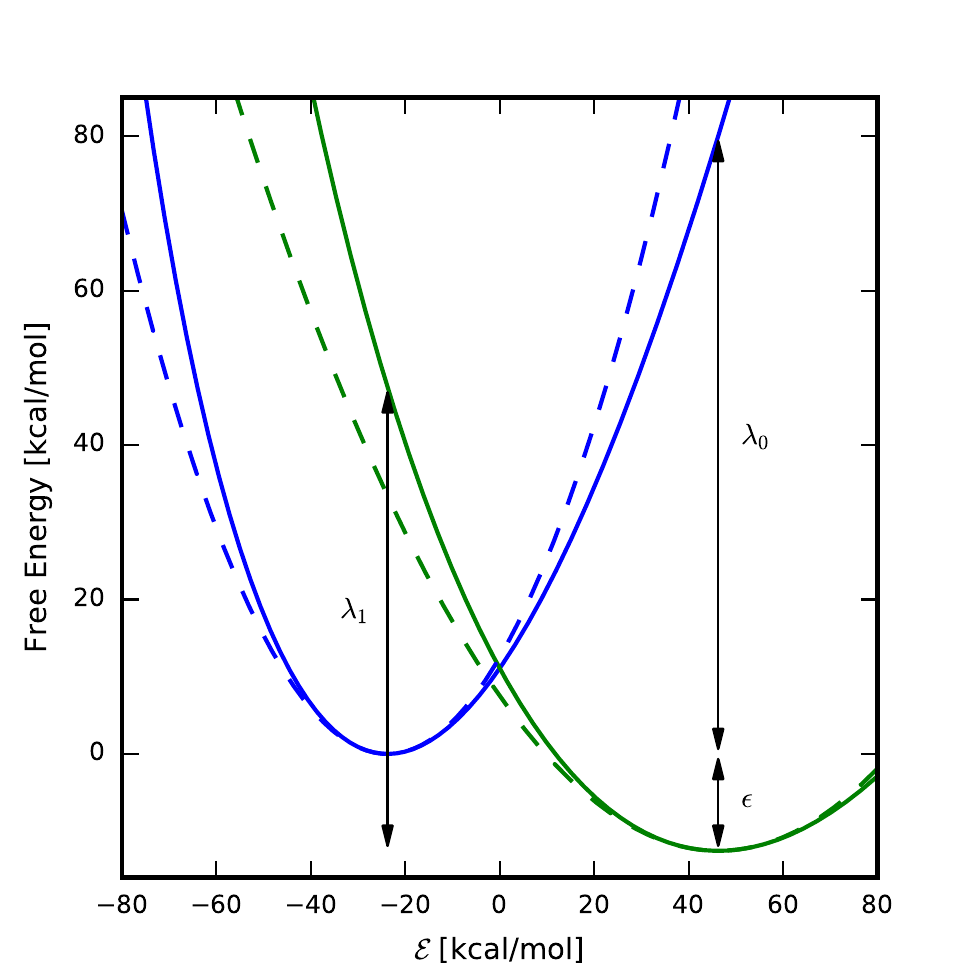arXiv paper published
"Effects of tunnelling and asymmetry for system-bath models of electron transfer" by Johann Mattiat and Jeremy O. Richardson

We apply the newly derived nonadiabatic golden-rule instanton theory to asymmetric models describing electron-transfer in solution. The models go beyond the usual spin-boson description and have anharmonic free-energy surfaces with different values for the reactant and product reorganization energies. The instanton method gives an excellent description of the behaviour of the rate constant with respect to asymmetry for the whole range studied. We derive a general formula for an asymmetric version of Marcus theory based on the classical limit of the instanton and find that this gives significant corrections to the standard Marcus theory. A scheme is given to compute this rate based only on equilibrium simulations. We also compare the rate constants obtained by the instanton method with its classical limit to study the effect of tunnelling and other quantum nuclear effects. These quantum effects can increase the rate constant by orders of magnitude.
Read the article at external page arXiv:1708.06702 [physics.chem-ph]